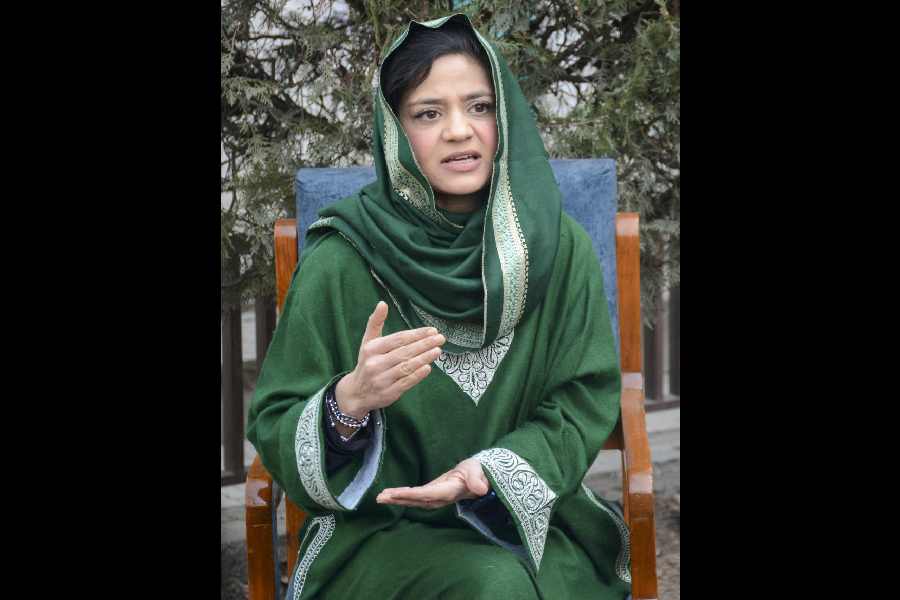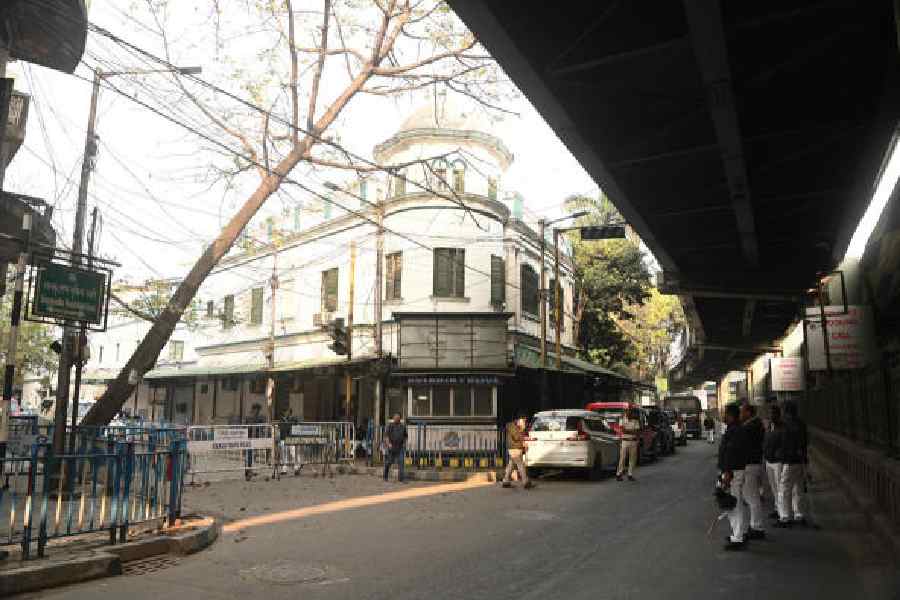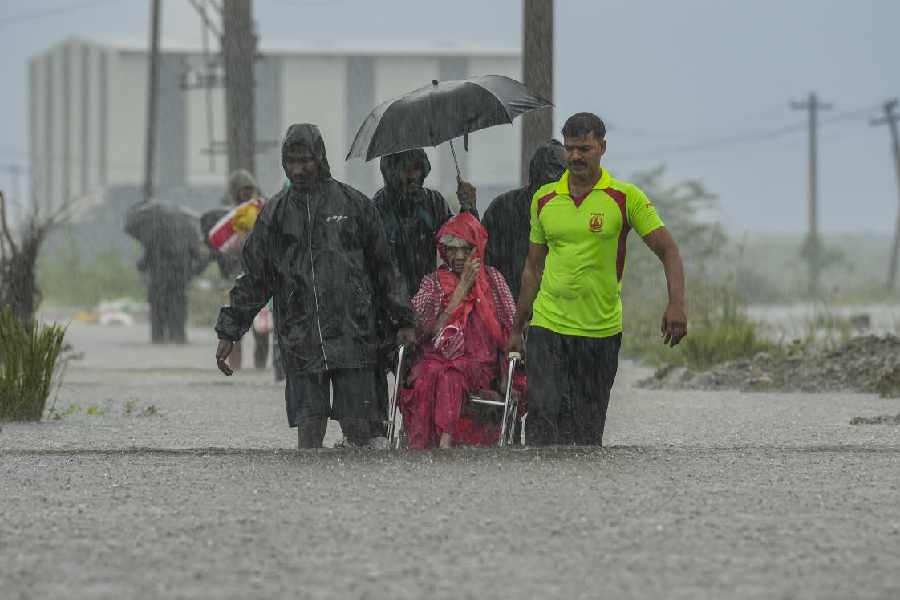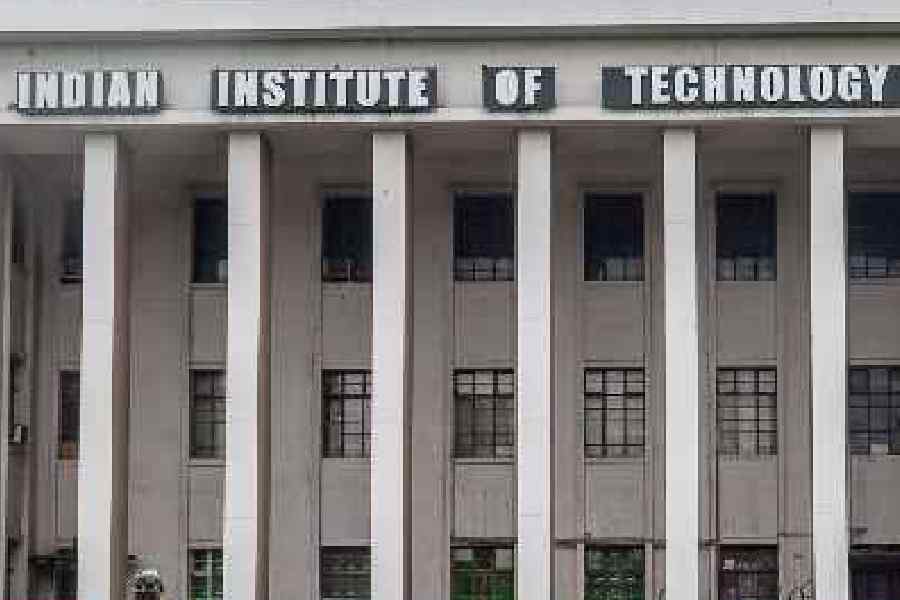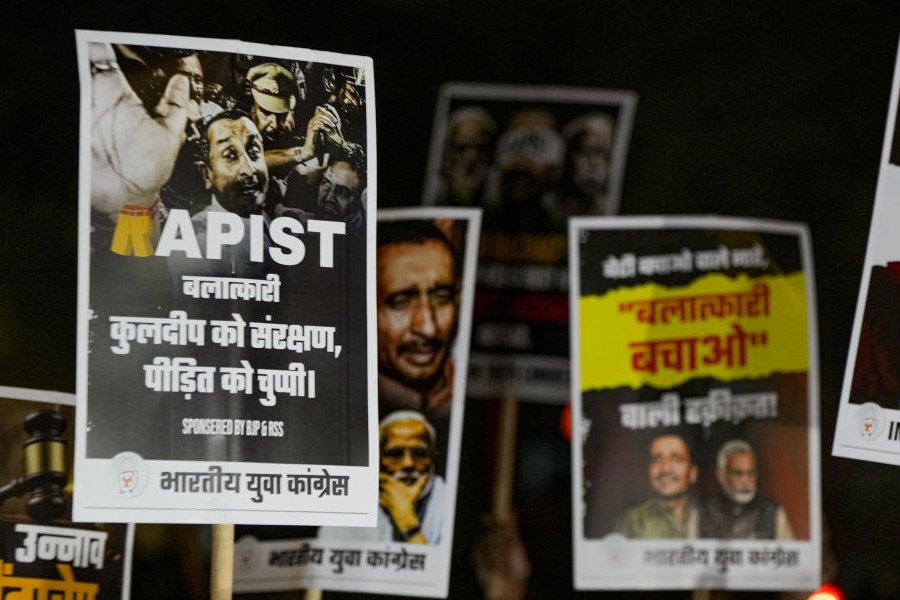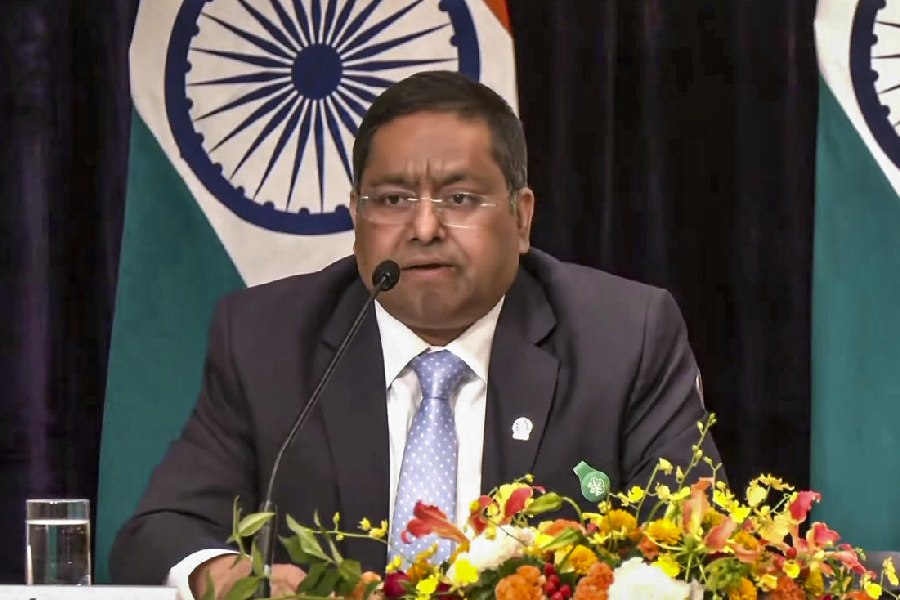|
|
| Flaw in the system |
The promise of guaranteeing employment to the poor was made in the common minimum programme of the United Progressive Alliance government in power. And, that promise became nearly unrecognizable in its content, when it was presented as the employment guarantee bill 2004 in the last winter session of parliament on December 21. It was the same fate for the right to information bill 2004 presented two days later on December 23. However, this is not simply a limitation of this coalition government. Underlying it are two contesting models of Indian economic development that would largely shape our economic future. And closer scrutiny of events seem to indicate that political rhetoric aside, it is not just a division between the Right and the Left, although at first glance it might appear so.
The first model invokes the idea that there is no alternative ? the TINA syndrome ? to globalization, WTO, free trade, indispensability of foreign investment, and accepting with little noise the rules set by the rich and industrialized countries which are part of the Organisation for Economic Cooperation and Development. In essence, it relies on globalization to increase the relative importance of the external vis-?-vis the internal market. Then a case is made for focusing on the external market, and greater international cost competitiveness by measures like wage restraint, and higher labour productivity through downsizing, privatization and so on.
The basic logic is that of corporate management, but applied to the whole of the economy. Like a single corporation, the economy is meant to increase its international market share by cutting costs, and naturally take the international market size as given. With little variation, this is also the reasoning behind the International Monetary Fund?s ?conditionalities for stabilization?, and the World Bank?s ?structural adjustment? package to developing countries. The flaw in this reasoning, when applied in general, is obvious.
Nevertheless, that micro-logic applicable to a single corporation, despite all the support it receives from such ?high places?, often involves a serious macro-fallacy for an obvious reason missed in this view. While the size of the international market is beyond the control of our national economy, and the strategy of increasing share of the market might be correct, the size of the domestic market is not given. It depends very much on the level of government spending, and this is precisely the strategic importance of a large employment guarantee scheme. It is not only beneficial to the poor, but it is the most effective practical way of reconciling the objectives of high growth through rapid expansion of the domestic market with high employment through distributive justice for the poor.
To see the importance of the argument about the size of the domestic market, note that cutting costs through measures like wage restraint and downsizing the labour force would probably reduce the size of the internal market through lower purchasing power. And there is little economic logic to the claim often made that this decrease in purchasing power would be compensated by a corresponding increase in export surplus or higher investment. As a matter of fact, because investment and export have a lower weight in India?s national income compared to consumption, simple arithmetic suggests that this is unlikely, because it requires a phenomenal increase in not merely export, but in export surplus as well. But this ignores the uncomfortable fact that all countries cannot be winners at the same time in this zero-sum game of competitive cost-cutting for producing an export surplus.
The policy must fail in many instances, because the export surplus of some countries must have as their accounting counterpart the import surplus of other countries. Since most developing countries tend to produce a similar range of exports, the competition among them would be more acute, and many of the losers would also be among the developing countries. But a predictable general outcome of this policy would be a ?race to the bottom? among developing countries acting in isolation, and making various concessions to the multinationals, at WTO negotiations, and so on. Why the IMF, the World Bank or the rich countries might want this is clear. But is this the kind of race we want to be engaged in as our first priority in economic policy?
There is, however, a more potent hidden script, seldom spelt out to the public. Arguably, the present phase of globalization began around the middle of the Seventies with the deregulation of the major capital markets in the world by the rich industrial nations. As a result, today the volume of private trade in foreign exchange, facilitated vastly by fast electronic transfers around the world, is a staggering daily volume of some 1.2 trillion (i.e. million million) dollars. Less than two per cent of this is needed at the most for financing export and import, and even less for direct foreign investment, while the entire reserve of all the central banks of the world put together can be wiped out in a few days of hostile private trade against central banks in the foreign exchange market. No where else in the entire episode of current globalization is the victory of private over public economic interest more pronounced than in the international capital markets. As a result, the government feels vulnerable.
With a relatively small stock market or a relatively soft currency by international standards, the Indian rupee and Dalal Street can be set in an uncontrollable downward spiral because of capital flights triggered off by the speculation of a few important private players. So the government is afraid that the sentiments of the traders, especially foreign traders in the capital markets, might turn hostile if, for instance, they have larger fiscal deficit or raise corporate taxes or impose a tax on the volume of transactions in the stock market. For instance, it results in the claim that a rising stock market, no matter how that happens, and the ability to attract inflow of capital, if necessary, by selling off even profit-making public enterprises are essential for the health of the economy. Naturally, they have the unstinted support of agencies like the IMF and the World Bank.
In contrast to this onslaught of the interest of global capitalism, a well-articulated theory and practice of economic policy have not been worked out. We require a coherent strategy about how to create an expanding domestic market involving the poor and the marginalized of our country, while accepting globalization only when it suits this strategy. Not otherwise. This must be the starting point of the alternative model of development. No doubt, at the moment no coherent attempt is in sight to create a political movement for the acceptability of such an alternative model. Support is lacking from the so-called left politics in India, while Chinese-style socialism, or the social democracy in Europe or America are following paths not relevant to the problems in our democratic set up. But the majority of poor people in India would support it from their daily experience of living because it might be their only way to a more decent living. After all, they rejected the image of a ?shining? India, and we must have the courage to follow them by putting forward this alternative model of development.
In essence, it requires emphasizing the relative importance of the internal over the external market. As a result, instead of the obsession with cost-cutting and wage restraint to improve international competitiveness, stimulating employment and demand in the home market, if necessary through a temporarily large budget deficit, should be at the core of this policy. With a substantial excess capacity in sectors like steel and cement, a large stock of foodgrains and high reserve holding of foreign exchange, this is the appropriate time to embark on this policy. In order to manage external accounts, at least to start with, tight restrictions on the capital account and a transaction tax on securities might be needed. Without making a plea for import substitution or autarky, it should be borne in mind that day to day fluctuations of the stock market, often the result of inflow or outflow of short-term foreign capital, cannot be an indicator of the health of the economy, or of the economic conditions of the poor.
At the same time, we must also have the courage to oppose not only right fundamentalism, but also left fundamentalism. We should have learnt from experience by now that a purely state-led model of industrialization has not worked satisfactorily, not in India, not in China, nor in the former Soviet Union. The thinking on the left appears confused, in so far as they now know that their traditional model did not work, but they also know that the other model would largely be an extension of global capitalism. The way out, would probably lie in devising a clever mixture of rapid expansion in the domestic purchasing power of the poor people through expansion of decentralized productive capacity at the level of the panchayats.
In broadest outlines, the expansion in purchasing power would come from public works financed initially, if necessary, through deficits in Central and state budgets, without going in for the ?giantism? of large, high-tech projects. They would be projects for rural communication, warehouses, school buildings, health centres, minor irrigation schemes and so on. The panchayats must have the full financial authority to design and implement these projects, subject to the crucial condition of transparency. Transparency and the right to information at all levels are not primarily moral issues in this context; it is not even an issue of deepening our political democracy. It would serve as the mechanism for bringing our political democracy closer to our as-yet-grossly-distorted economic democracy.
Thus, unlike in usual public works, ?S/he who benefits should largely pay? has to be the guide-line for this time-bound programme without indefinite income transfer to the panchayats. It would differ from short-term Keynesian-style demand management in two important respects. First, investment would not be financed over the medium term from utilization of the excess capacity, but from the capacity created and utilized through these decentralized works. The local bodies will have to take this responsibility, while they will have the freedom to choose the projects. Second, social overheads created ? like schools, health centres, and so on ? would be a part of the ?social wage? intended at improving the quality of life, and be completely accountable to the local elected bodies. Both the legal-constitutional as well as the economic aspects of the programme can be worked out, but the first step is to accept the need for this alternative model.
From this point of view, the current employment guarantee bill 2004 is not merely a deliberate bureaucratic dodge, it leaves virtually no scope for local initiatives at the panchayat level. The ?poor households? will be selected according to bureaucratic norms, the employment guarantee schemes at the state level can be modified any time by the notification of the Central government, access to information for the concerned public is restricted by stating that relevant documents (like muster rolls) would be available on paying ?such fee as may be specified in the scheme?, and even the wages to be paid seem open to manipulation, not the statutory minimum.
But the perverse strength of the bill lies in the simultaneous manipulation of the employment guarantee bill, and the right to information bill 2004. The latter bill, by withdrawing access to information available with the state governments, district or local level administration leaves the states non-accountable. The states would neither share the financial burden for a wider employment guarantee scheme nor would they genuinely share power with the panchayats, but they would not face public accountability either. This is a very convenient arrangement for all in power. It has only one flaw, it leaves the desperately poor without an economic future.



